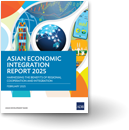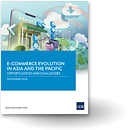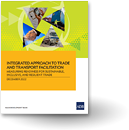The Republic of Korea’s trade relations, its FTA policy and trade integration in the Asia-Pacific
At the end of 2011, the Republic of Korea became 1 of only 9 nations in the world whose total trade volumes exceeded $1 trillion. The Republic of Korea also became the 7th largest exporting nation in 2010, with exports of over $500 billion. The Republic of Korea’s FTA strategy has been an important component of this growth, though their potential is not yet fully utilized.
The recent free trade agreements (FTAs) signed with the United States (US), and the European Union (EU) represent significant efforts by the Republic of Korea to strengthen trade relationships with core advanced-country markets. This is necessary because our trade relationship with the US has weakened since the early 1990s. And, despite the immense opportunities in the EU market of 28 countries, the Republic of Korea has not been able to significantly improve its trade share.
As the world economy is still hardly recovering from the global financial crisis, the benefits of more recent FTAs have not yet been clearly realized. Additionally, the Republic of Korea-US and the Republic of Korea-EU FTAs have been utilized predominantly by large conglomerates. This makes it important to systematically support Small Medium Enterprises (SMEs) to be more actively involved in utilizing these FTAs in the future. The Korea International Trade Association (KITA) has been undertaking numerous FTA-utilization programs catered to SMEs. However, large global conglomerates should also be more proactive in cooperating with not only their ready subcontractors, but also with other prospective SMEs, and helping them grow into globally competent firms.
Another element of the importance of promoting SME participation is that when more SMEs become competitive participants in global value chains, the Republic of Korea will be able to effectively diversify its export basket. This will enable the economy to overcome overspecialization in a limited number of products. An export structure that engaged more quality SMEs, would also assist in the alleviation of the youth unemployment problem in the Republic of Korea.
The Republic of Korea has signed 10 FTAs with 47 countries. The total Gross Domestic Product (GDP) of FTA partner countries make up 59% of the total world GDP. We have also begun FTA negotiations with the People’s Republic of China (PRC) in May 2012, and is also negotiating a Republic of Korea-PRC-Japan FTA. The Republic of Korea-PRC FTA is currently making good progress. When concluded, it will not only improve trade performance between the 2 countries, but will also consolidate the Republic of Korea into an FTA hub nation. The market access gains from a completed Republic of Korea-PRC FTA will enable our economy to attract more enterprises from the US, Japan, and EU which are aiming to access the PRC market. These investors may establish their production base or research and development centers in the Republic of Korea. Such expected inflows of foreign direct investment would create new quality jobs as well. Another potential consequence is the progressive opening of PRC services markets.
The Republic of Korea should take an active role during the negotiation process of the ongoing Republic of Korea-PRC-Japan FTA and Regional Comprehensive Economic Partnership (RCEP). Recently, the government announced its interest in joining the Trans Pacific Partnership Agreement (TPP) and started bilateral consultations with the participating countries. Among the 12 countries participating in the TPP, the Republic of Korea has already concluded FTAs with 7 of them, and is also in negotiations with another 3. As a result, it doesn’t seem to be too difficult to actually join the partnership.
Although, the Bali Ministerial Conference of the WTO produced a reasonably balanced package, there will be much work to do in coming years. Therefore, concerns on how to strategically embrace the mega Regional Trade Agreements (RTAs) must be addressed by the Republic of Korea. Within this process, the PRC, the world’s number one trading nation, and the Republic of Korea, the 9th, should responsively work together to reach a progressive conclusion to their FTA negotiations. A successful Republic of Korea-PRC FTA could trigger RCEP to be concluded at a relatively advanced level as well. In the longer-term, it is also expected that a comprehensive integration of the Asian-Pacific region through merging mega RTAs, such as RCEP and TPP could be reached. If such a result is accomplished, a global negotiating process that so, emphasizes the multilateral trade regime of the WTO could be revisited.
*Taeho Bark is a professor at the Graduate School of International Studies of the Seoul National University, and a former Minister of Trade for the Repubilc of Korea




